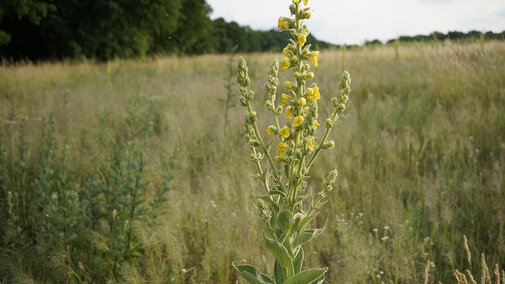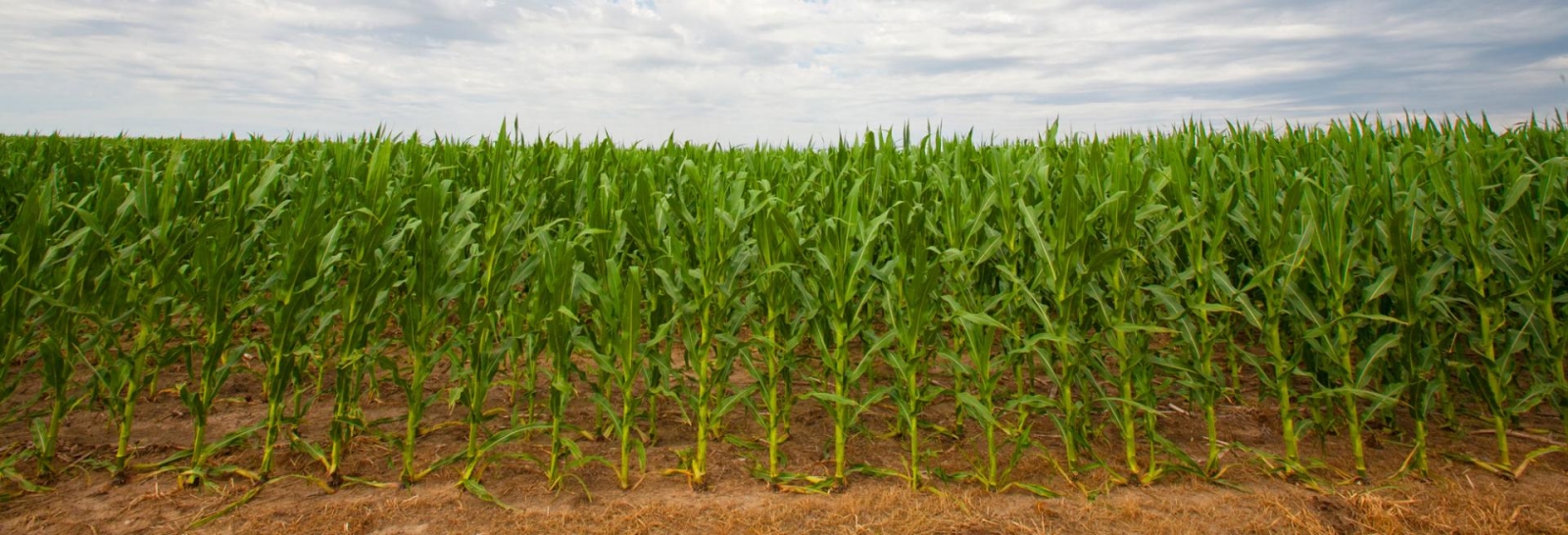Heat Effects on Alfalfa
When it gets hot, alfalfa plants grow more slowly and moisture stress becomes common, even in moist soil. Production of high-quality hay is nearly impossible due to the high temperatures, especially when the heat does not subside at night. High night-time temperatures cause rapid respiration rates in alfalfa, burning off valuable nutrients that plants accumulated during the day. This often produces alfalfa hay with fine stems that contain high protein, but they also have high fiber and low relative feed value.
Another problem with heat is how fast alfalfa plants mature. When it is hot, alfalfa may begin to bloom in less than four weeks. If you use blooming as a signal to harvest, this early bloom can be misleading. During hot weather alfalfa plants need more time, not less time to rebuild nutrient reserves in their roots because they burn off nutrients instead of moving them to the roots when it is hot. So, watch the calendar along with plant maturity to determine when to cut your alfalfa fields.
Finally, you might adjust the time of day when you cut hay. Some research has shown that cutting in late afternoon produces higher quality hay than cutting in the morning. However, on good drying days, it may still be wiser to cut in the morning. When hay in the windrow stays above 50% moisture, plant cells continue to respire, burning away nutrients. Hay cut late in the day respires all night long, losing yield and quality. On good drying days, plant cells can dry enough to be stabilized before nightfall, reducing respiration losses.
Getting high quality hay is challenging. Both you and the weather must cooperate — and even then, there are no guarantees.
Common Mullein Control
Common mullein is an invasive biennial weed that can spread rapidly into pastures. First year seeds prefer to germinate and form rosette plants in disturbed or tilled soils. Then, second year mullein plants become competitive with pasture and roadside grasses, developing yellow flowering seed head spikes. Due to recent mild winters, mullein winter survival has been high.
For outdoor enthusiasts, bolting mullein provides colorful edible yellow blooms and dried seedhead spikes can be used as short-term torches for alternative night lights. The smooth, woolly mullein leaves are also known as “hunter’s toilet paper.”
Hand-pulling or digging can be effective for controlling small infestations, especially prior to plants producing seeds. Remove the entire rosette or sever the root below the soil surface. Repeated mowing when plants are in the bolting to early flowering stage can reduce seed production, but mowing low-growing rosettes is generally not effective. Remember that spring seed germination can be problematic for years after weed seed is produced.
Herbicide control can be a challenge due to the dense, hairy mullein leaves hindering absorption, and single herbicide(s) mode of action usage has led to some herbicide-resistant weeds. Where herbicide resistance is not an issue, effective control usually requires that chemicals be applied either during the rosette stage (first year development) or prior to seed development during the second-year bolting stage. Note that non-ionic surfactant or crop oil concentrates must be included with most herbicide applications to overcome the woolly mullein leaves reducing coverage.
The most effective labeled control products in UNL studies — which must be applied to rosettes prior to spring bolting — include: Remedy®, Tordon®, Milestone®, Graslan®, MezaVue™, and Chaparral™. Other labeled herbicides include: Method®, Grazon P+D®, GrazonNext®HL, DuraCor™, Telar®, Escort®, Cimarron Plus®, Pastora®, Overdrive®, and Metsulfuron. A fall application can control common mullein before it overwinters, but the herbicide will not persist and control new spring seedlings.
More information regarding common mullein herbicide choices and application timing is available on CropWatch or UNL Beef.
Late July Grasshopper Management
As we enter a period of hotter and drier weather, grasshoppers will begin to move into crops from field edges. In the coming weeks, be sure to scout your fields to ensure defoliation from grasshopper feeding is kept at a minimum.
One of the best ways to scout for grasshoppers is to use the square foot method. Randomly select an area several feet away and visualize a one square-foot area around that spot. Walk toward this spot and count the number of grasshoppers you see in or jumping out of this area. Repeat this procedure 18 times and divide the total number of grasshoppers by two. This will give you the number of grasshoppers per square yard. Economic thresholds for grasshoppers range from eight to 40 grasshoppers per square yard, depending on a variety of factors.
If grasshopper levels have reached threshold, treatment with an insecticide may be feasible as long as pre-harvest intervals are considered. Many insecticides used for other insects in alfalfa and other forages are also labeled for grasshoppers. For current insecticide recommendations for controlling grasshoppers in rangeland, forages, alfalfa and other crops, please contact your county extension office.
It's also important to remember that our goal isn’t to completely eradicate grasshoppers from our fields, but to reduce their numbers to below threshold levels and give our crops a chance to “win the race” against pests until the first hard freeze of the season.

